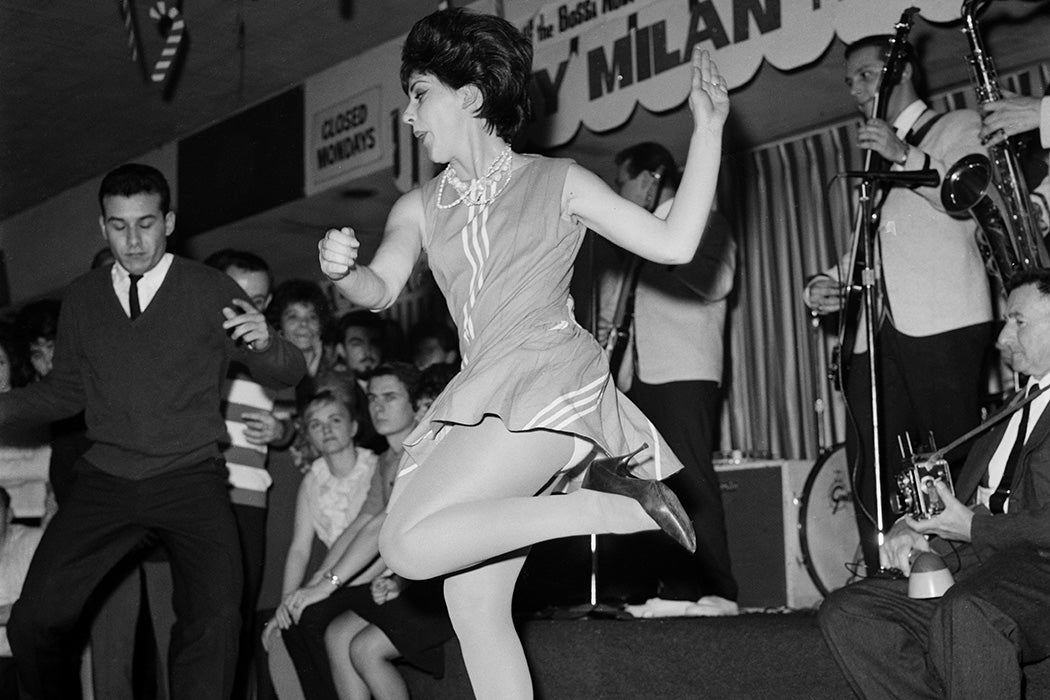What does it take to make a dance take off? In the TikTok era, it might be a catchy sound and a few prominent influencers. Ethnomusicologist K. Goldschmitt explores the same question in reference to bossa nova’s sudden rise to popularity in the US in the mid-1960s.
Goldschmitt writes that the music known as bossa nova (“new wave” or “new trend” in Portuguese) was born in the 1950s in a wealthy part of Rio de Janeiro. Musicians including João Gilberto, Antônio Carlos Jobim, and Vinícius de Morãe transformed Afro-Brazilian samba music to suit the tastes of a cosmopolitan Brazilian elite. The sound mixed in global influences including American “cool” jazz and French impressionism. It de-emphasized samba’s danceable rhythms and vocal melody in favor of greater harmonic and lyrical complexity.
Bossa nova first arrived in the US in a big way with jazz guitarist Charlie Byrd, who heard the style and picked up some recordings on a State Department-sponsored tour of South America. Together with saxophonist Stan Getz, Byrd recorded the 1962 album Jazz Samba, reworking the Bossa Nova sound for the tastes of US jazz fans. The music industry was wowed. Billboard Magazine asked “Is The Bossa Nova the New Twist?”
But, to be a sensation like the twist, the music would need an iconic song and an accompanying dance. Billboard reported that “a lot of pop record men are sitting up nights trying to come up with such a record-dance combination.” One issue was that most versions of bossa nova dances took some time to learn. Another was that they were couples’ dances in which the man led the woman.
“It was perhaps because the twist and bossa nova were so different—one disrupting gender and social class hierarchies and the other restoring them—that that bossa nova was doomed to fall short of industry expectations,” Goldschmitt writes.
Weekly Newsletter
The bossa nova may not have dazzled the youth, but it became a symbol of sophistication among the most powerful people in the country. In January 1963, a New York Times cultural column reported that Kennedy administration figures including Secretary of State James Rusk and Defense Secretary Robert McNamara “simply wouldn’t come to the White House to listen to [popular band leader] Fred Waring. You’ve got to give them Sandburg, Shakespeare, bossa nova, Leonardo da Vinci.” By the end of 1963, products from hair cuts to cashmere sweaters to ice cream were using the term “bossa nova” to convey sophistication.
Over time, though, the spread of the music and dance style undercut its exclusive luxury image. Goldschmitt notes that this process was accelerated by the huge popularity of a cover of the bossa nova song “The Girl from Ipanema” by Stan Getz and singer Astrud Gilberto, which became the object of parody by 1966. Bossa nova didn’t disappear, but it fell out of the national spotlight much like last month’s TikTok sound.
Support JSTOR Daily! Join our new membership program on Patreon today.







